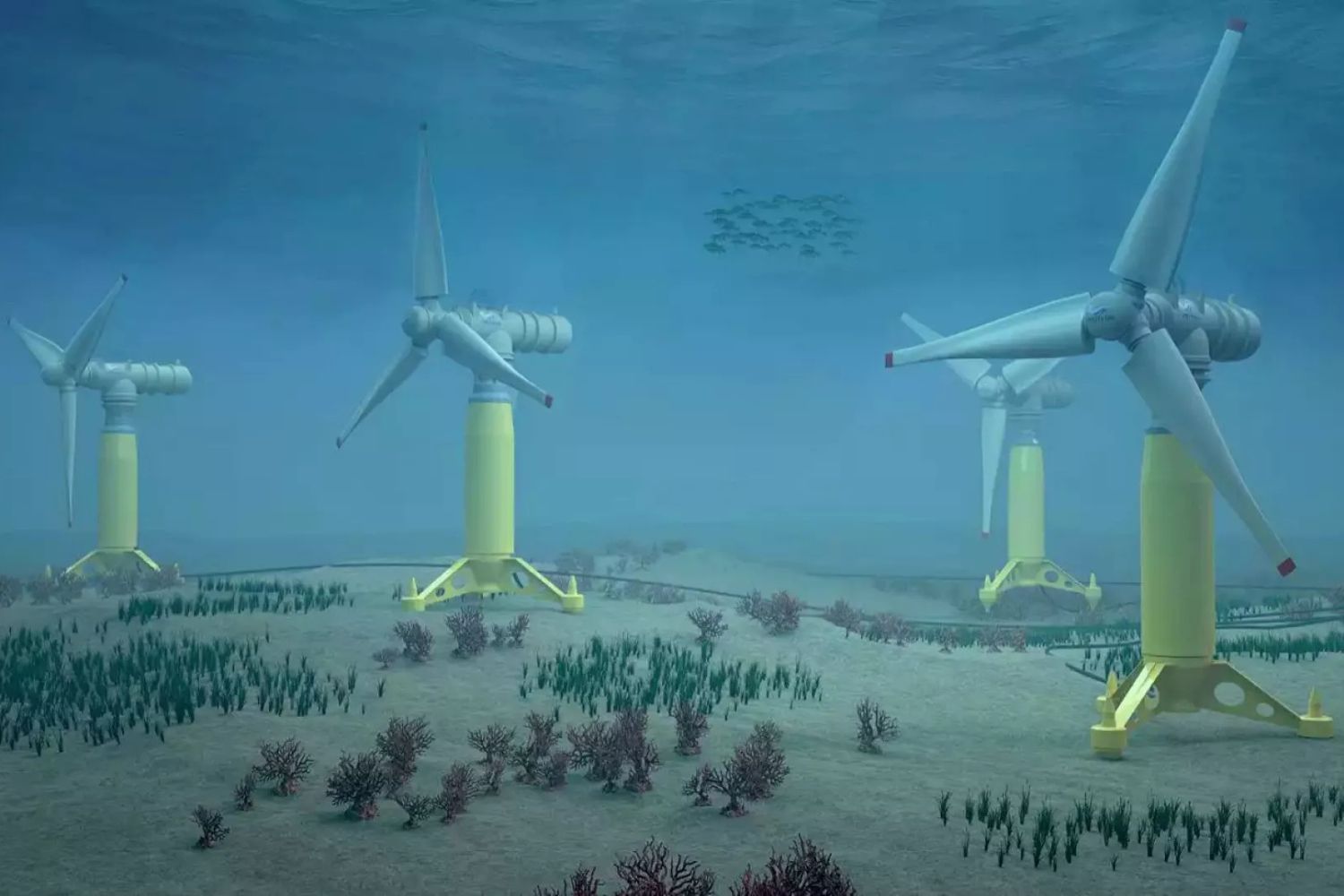A farm of four tidal turbines off the coast of Cap de la Hague, Normandy, will produce 33.9 GWh of clean energy per year, enough to supply 15,000 inhabitants by 2028. The project will generate around 400 jobs and environmental studies have confirmed the turbines' low impact on marine life.

@Normandie Hydroliennes
A tidal turbine farm will be installed at the bottom of the sea in normandy, set to become the most powerful in the world
The power of the sea
The sea is increasingly becoming a strong ally in the transition to renewable energy, providing a reliable source of energy 24/7. The energy generated by wave motion can help stabilize the renewable energy mix when the sun and wind are unavailable.
Numerous solutions are being proposed by entrepreneurs and innovators to harness this inexhaustible resource: from small, “portable,” and “recyclable” systems to larger ones capable of withstanding stormy seas, and even those inspired by the human heart, designed to adapt to any condition.
The farm at the bottom of the sea
A major project is set to take shape off the coast of Cap de la Hague in Normandy, an area known for its strong marine currents ideal for energy production.
The farm will consist of 4 marine turbines, with a nominal power of 12 MW, and will generate 33.9 GWh of clean energy annually—enough to power 15,000 people by 2028.
NH1 is the name of the project, developed by Normandie Hydroliennes, a French company specializing in the development of tidal energy facilities.
Through this project, the company expects to create around 400 full-time jobs, both direct and indirect.
An environmentally-conscious project
Before the development, marine and land-based studies were conducted to assess the impact of the turbines on the marine ecosystem. Research has shown a return of marine species (fish, marine megafauna, etc.) and demonstrated that the turbine foundations and connection cables can become habitats for various species.
The company also states that the sound pressure levels of the turbines are below thresholds that would disturb marine megafauna, and that these levels decrease rapidly, becoming indistinguishable from ambient noise.
Compared to wind turbines of equivalent power, marine turbines are more compact and occupy less space. In the case of the NH1 project, they will occupy only 5% of the designated area and will be installed at a minimum depth of 125 feet (38 meters), without any visual impact or navigational risks.
The European Innovation Fund award
ecently, Normandie Hydroliennes announced that the NH1 project has been selected as the winner of the European Innovation Fund 2023 and will receive $33.7 million in funding to accelerate the development and deployment of this system.
The Innovation Fund is a program by the European Commission, with a budget of $5.1 billion. It is one of the world’s most significant funding programs aimed at supporting low-carbon technologies.
Source: Normandie Hydroliennes
